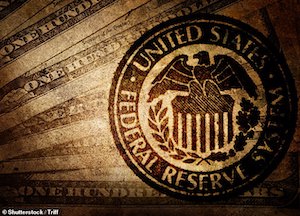There is always more than one cockroach in the kitchen!

The gold market will remain well supported and should eventually see a sustained break above $2,000 an ounce as the biggest banking crisis since the 2008 Great Financial Crisis is far from over, according to one esteemed economist.
In an interview with Kitco News, David Rosenberg, founder of Rosenberg Research, said that gold and bonds remain two of his top investments for 2023 as the banking crisis threatens to push the global economy into a deep recession.
Rosenberg has been bullish on gold since December after publishing his 2023 outlook report.
The comments come as gold prices, while remaining elevated above $1,900 an ounce, have fallen from last week’s highs of around $2,000 an ounce. June gold futures last traded at $1,983.60 an ounce, roughly unchanged on the day.
Rosenberg said that it is only a matter of time before gold prices push higher as the inverted yield curve highlights the 90% chance that the economy falls into a recession this year.
He added that a new banking crisis could be what pushes the economy over the edge.
“The big banks are fine. They’re well-capitalized. They have liquidity buffers. They actually may come out of this so much stronger,” he said. “The problem now is in the small banks and they aren’t so small anymore. Today the small banks collectively have $7 trillion in assets.”
While the U.S. government and the Federal Deposit Insurance Corporation (FDIC) have stepped in to guarantee all depositors’ funds held in banks, Rosenberg said that the quality of assets held at these regional banks remains a big question.
While tensions over the collapse of Silicon Valley Bank and Signature Bank have eased recently, Rosenberg warned that “there is always more than one cockroach in the kitchen.”
“Everybody’s focused on deposit insurance, concentrated uninsured deposits on the liability side of the balance sheet. But you know, the other part of the story is going to be what do the assets look like?” he said. “Nobody talks about the quality of the assets – these traditional loans, especially as they pertain to commercial real estate business loans, credit cards and auto loans. A lot of these loans are held at the regional bank level.”
The U.S. credit market has seen significant volatility this past year as the Federal Reserve aggressively raised interest rates by 500 basis points. Rosenberg noted that the economy is just starting to see a rise in delinquency rates in commercial real estate, auto loans and credit card payments.
Rosenberg said that economic conditions will only get worse as it takes up to 12 months before consumers start to feel the effects of the Federal Reserve’s monetary policy tightening. While interest rates, at 5%, are still relatively low compared to historic levels, he noted that the rate of change has been unprecedented.
“I don’t know if I want to call it a crisis, but we’re heading into a new chapter in the credit cycle, moving from a positive credit expansion to a negative credit expansion. This is going to reinforce the recession that was already in play,” he said.
Looking ahead to the Federal Reserve’s May monetary policy meeting, Rosenberg said that the central bank is done raising rates. However, he added that the damage has already been done, and investors are now just waiting for the other shoe to drop.
In this environment, Rosenberg said that the Federal Reserve will be forced to cut rates before the end of the year. According to the CME FedWatch Tool, the markets see a 50% chance of a rate cut in June. At the same time, the market sees the potential that the Fed Funds rate could end the year 100 basis points lower from current levels.
 “If the Fed is going to cut rates in the second half of this year, where do you want to be? You want to own some gold and you want to own some bonds,” he said. Real interest rates will be coming down; the U.S. dollar is going down, which is why gold has been performing so well.”
“If the Fed is going to cut rates in the second half of this year, where do you want to be? You want to own some gold and you want to own some bonds,” he said. Real interest rates will be coming down; the U.S. dollar is going down, which is why gold has been performing so well.”
Rosenberg noted that despite the volatility in February, his long bond, long gold barbell strategy is up 8% this year.
Written by Neils Christensen for KITCO ~ March 30, 2023








